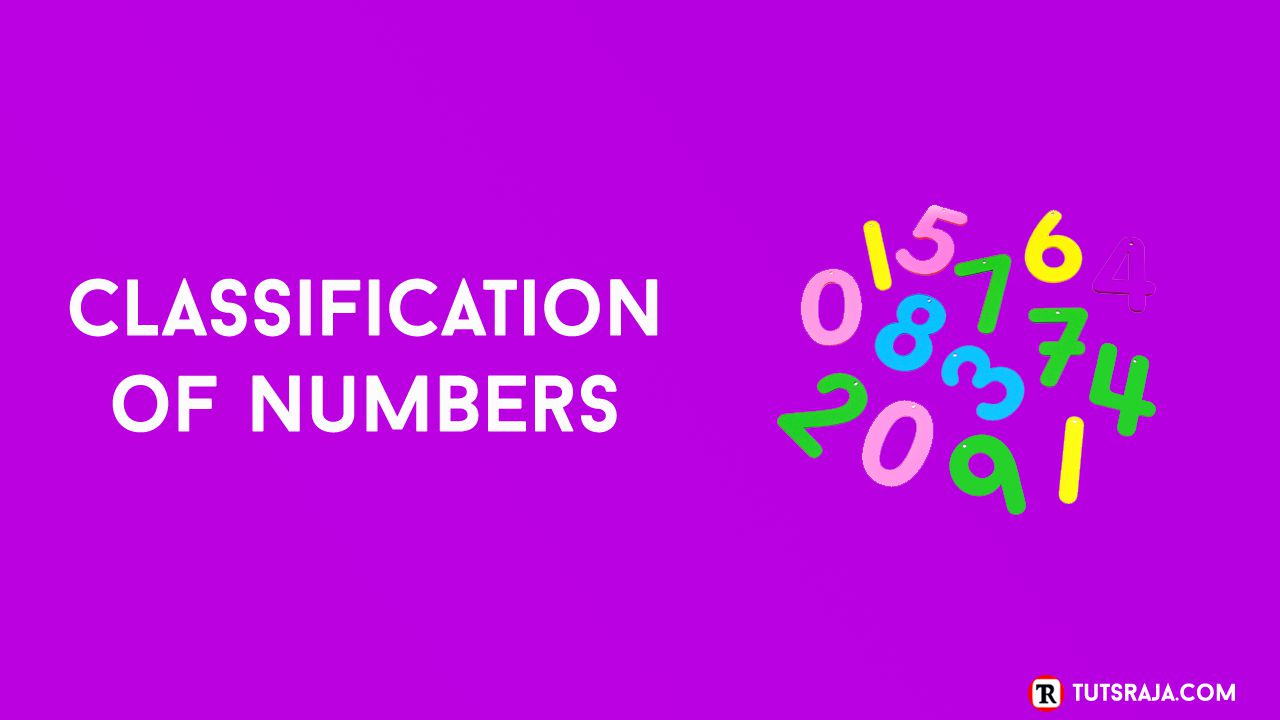
అంకగణిత సంఖ్య పదం, గుర్తు లేదా బొమ్మ ద్వారా వ్యక్తీకరించవచ్చు. అవి నిర్దిష్ట పరిమాణాన్ని సూచిస్తాయి మరియు లెక్కించడం, కొలవడం మరియు గణనలు చేయడంలో ఉపయోగించబడతాయి .
మేము పోటీ పరీక్షల దృక్కోణం కోసం దాదాపు అన్ని సంఖ్య వర్గీకరణలను కవర్ చేసాము. సంఖ్యా ఆప్టిట్యూడ్ కోసం తెలుసుకోవడానికి ఈ సంఖ్య వర్గీకరణలు అవసరం .
గమనిక: కంటెంట్ సూచికను చూపించడానికి షో/దాచు బటన్పై క్లిక్ చేయండి.
1. Decimal Number
2. Digit
3. Number
4. Face Value
5. Place Value
6. Natural Numbers (N)
7. Whole Numbers (W)
8. Integers(Z)
9. Rational Numbers (Q)
10. Irrational Numbers (P)
11. Real Numbers(R)
12. Even Numbers
13. Odd Numbers
14. Prime Numbers
15. Composite Numbers
16. Co-Primes Numbers
17. Twin prime numbers
18. Consecutive numbers
19. Consecutive even numbers20. Consecutive odd numbers21. Complex Number
Speed Addition Tricks
1. Decimal Number:
Decimal number contains decimal point. Decimal point is .
Example: 27.45
2. Digit:
Classification of number system 0, 1, 2,3,4,5,6,7,8 and 9 symbols are called digits.
Example:0,1,2,3,4,5,6,7,8,9.
3. Number:
Group of digits is called as a number.
Example: 21, 456, 1244, 25734 etc
4. Face Value:
Face value is nothing but actual value of the digit.
Example: 458
Face value of 4 is 4
Face value of 5 is 5
Face value of 8 is 8
5. Place Value:
When the value contains digits that is number, such digits counting is units, tens, hundreds, thousands…etc
Example: 342
The place of 2 is units. Place value of 2 * 1 = 2
The place of 4 is tens. Place value of 4 * 10 = 40
The place of 3 is Hundreds. Place value of 3 * 100 = 300
6. Natural Numbers (N):
Counting numbers without zero is called natural numbers. Natural numbers does not contain zero. Natural numbers denoted by N
Formula: n > 0
Example: 1,2,3,4,5,6,7,8,9,10,11,12…
7. Whole Numbers (W):
Counting numbers with zero is called as whole numbers. Whole numbers denoted by W.
Formula: n ≥ 0
Whole numbers = Natural numbers + zero
Example: 0,1,2,3...
8. Integers(Z):
Counting Numbers with zero and –ve numbers is called as integers. All integers are fractions. Not all fractions are integers. Integers denoted by Z
- Positive Integers: n > 0; [1, 2, 3...]
- Negative Integers: n < 0; [-1,-2,-3...]
- Non-Positive Integers: n ≤ 0; [0,-1,-2,-3...]
- Non-Negative Integers: n ≥ 0; [0, 1, 2, 3...]
Formula: n ≥ 0 or n ≤ 0
Integers = Whole numbers + the negative of the whole numbers.
Example: ….3,-2,-1, 0,1,2,3...
9. Rational Numbers (Q):
Rational numbers nothing but fraction of real number. Rational numbers denoted by Q. Fractions can be written as a terminating decimal or a repeating decimal.
Example: 22/7, 45/6…
Formula: m/n remainder is not zero
Rational numbers = Integers + fractions
10. Irrational Numbers (P):
irrational number is a number that perfectly divisible by itself. Irrational Numbers is denoted by P.Irrational numbers are numbers that cannot be written as a fraction. Another way to see them is that they are neither repeating decimals nor terminating decimals.
Example: 22/2, 45/5…
Formula: m/n remainder is zero
11. Real Numbers(R):
Collection of rational and irrational numbers called as real numbers. Real number is denoted by R.
Example: 22/2, 45/5, 22/2, 45/5…
Formula: m/n
Real numbers = rational numbers + irrational numbers
12. Even Numbers:
A number perfectly divisible by 2 is called as even number. Alternative numbers from zero is also called as even numbers.
Example: 0, 2, 4,6,8,10,12…
Formula:n / 2 = 0
13. Odd Numbers:
A number not perfectly divisible by 2 is called as odd number.
Example: 1, 3,5,7,9…
Formula: n / 2 ≠ 0
14. Prime Numbers:
Numbers which is divisible by itself and 1 is called as prime numbers. 1 is not a prime number.
Example: 2, 3, 5, 7, 11, 13, 17, 19, 23, 29, 31, 37, 41, 43, 47, 53, 59, 61, 71, 73, 79, 83, 89, 97
1Q: How to check 157 is prime number or not?
Solution:
Step 1 : 13 > √157
Step 2 : Prime numbers less than 13. So less than 13 prime numbers are 2, 3, 5, 7 and 11.
Step 3 : 157 is not divisible by any prime numbers (below 13).
Result : Finally 157 is a prime number.
Formula: n/n, n/1
15. Composite Numbers:
non prime numbers are called composite prime numbers. 1 is neither a prime number nor a composite number. 2 is the only even prime number.
Example: 4, 6, 8, 9….
Formula: Natural numbers- prime numbers
16. Co-Primes Numbers:
Two natural numbers are co-primes if their H.C.F. is 1. For example, (2, 3), (4, 5) are co-primes.
Example: (2,3), (4,5),(4,9), (21,44)..
Formula: 2 number H.C.F is 1
17. Twin prime numbers:
A pair of prime numbers difference is two are called twin prime number.
Example: The twin prime numbers between 1 and 100.
(3, 5), (5, 7), (11, 13), (17, 19), (29, 31), (41, 43), (59, 61), (71, 73).
Formula: n2-n1=2
18. Consecutive numbers:
If the difference between two numbers is 1, it is called as consecutive number.
Formula: x, x+1, x+2
Example: 16,17,18,19
19. Consecutive even numbers:
if the difference between two numbers is 2, it is called as consecutive even numbers.
Formula: x, x+2, x+4
Example: 16, 18, 20
20. Consecutive odd numbers:
if the difference between two numbers is 2, it is called as consecutive odd numbers.
Formula: x, x+2, x+4
Example: 17, 19, 21
21. Complex Number:
A Complex Number is a combination of Real Number and Imaginary Number. Complex number is denoted by Im(z).
Formula: a + bi
a, b real numbers
I imaginary number.
Example:√(-7), √(1-8), √(-25) = 5i, etc...
 RajashekarKankanala
RajashekarKankanala.png)



 Welcome to Tuts Raja!
Welcome to Tuts Raja!



